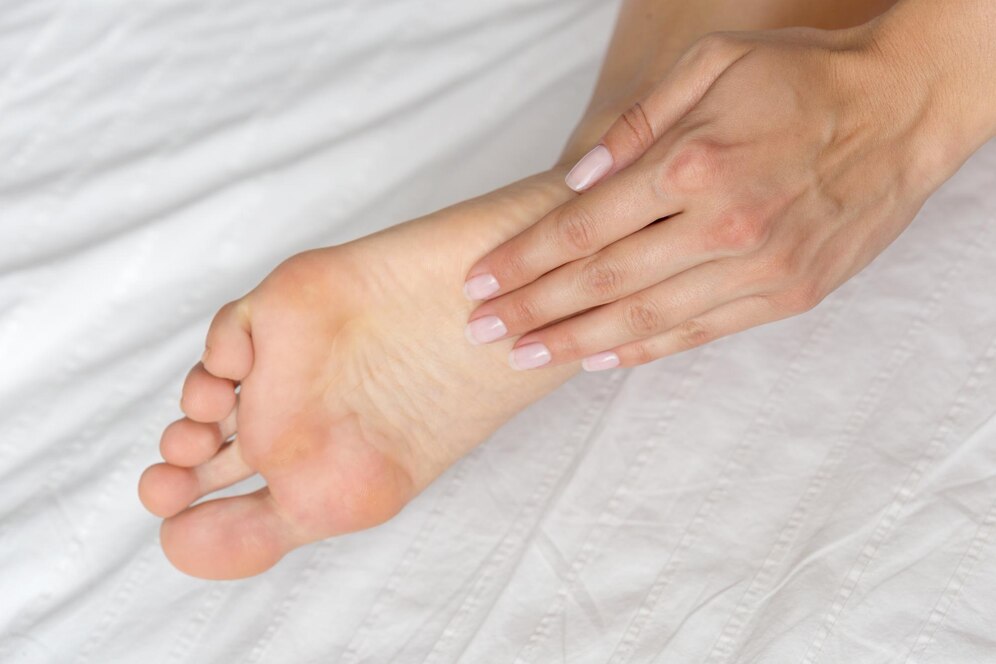Plantar warts are non-cancerous growths that develop on the soles of the feet, often affecting weight-bearing areas such as the heels or balls of the feet. Caused by the human papillomavirus (HPV), these warts can cause discomfort, pain, and difficulty walking when left untreated. As Midtown Manhattan’s premier provider of essential podiatry services, Park East Podiatry is committed to helping patients understand, prevent, and treat plantar warts through comprehensive care and expert guidance.
In this in-depth blog post, we will discuss the primary causes and symptoms of plantar warts, decipher the differences between plantar warts and other foot conditions, and explore the various treatment methods for plantar warts available at Park East Podiatry. As we delve into the complexities of plantar warts, patients can become better informed about their foot health and make effective decisions about preventing and treating this common yet bothersome condition.
Causes of Plantar Warts
Plantar warts are caused by the human papillomavirus (HPV), which enters the body through tiny cuts or abrasions on the soles of the feet. While there are over 100 different strains of HPV, only a few are responsible for causing warts to develop on the feet. Factors contributing to the development of plantar warts include:
- Weakened immune system: Those with a weakened immune system may be more susceptible to developing plantar warts.
- Walking barefoot: Going barefoot in public spaces (e.g., locker rooms, swimming pools, or communal showers) can increase the risk of HPV exposure.
- Skin trauma: Damage to the skin on the bottom of the foot can create an entry point for the virus.
Identifying Plantar Warts: Symptoms and Presentation
Recognizing the appearance and symptoms of plantar warts can help ensure timely treatment and prevent discomfort or complications. Common symptoms and presentation of plantar warts include:
- Cauliflower-like appearance: Plantar warts often have a rough, grainy surface with tiny black dots (pinpoint bleeding points) within the wart.
- Pain and discomfort: Plantar warts can cause tenderness and pain when standing or walking, as pressure is applied to the wart.
- Location: Plantar warts typically appear on the soles of the feet, specifically the weight-bearing areas such as the heels or balls of the feet.
Diagnosing Plantar Warts: Differentiating from Other Foot Conditions
Accurate diagnosis of plantar warts is crucial to ensure effective treatment. Several foot conditions share similarities with plantar warts and must be ruled out during the diagnostic process. These conditions include:
- Calluses: Thickened, hardened skin that forms in response to pressure or friction. Calluses lack the characteristic pin-like dots of plantar warts.
- Corns: Small, circular areas of thickened skin that develop from friction or pressure; unlike plantar warts, they do not involve viral infection.
- Foreign bodies: Splinters or other foreign objects lodged in the skin can mimic plantar warts but are differentiated by close examination.
Treatment Options for Plantar Warts
Treatment will vary based on the severity of the wart, patient preference, and underlying health conditions. Common treatment options include:
- Over-the-counter remedies: OTC wart treatments containing salicylic acid can help shed layers of skin infected with HPV. Consistency and compliance are important for successful results.
- Prescription medications: Podiatrists may prescribe topical creams or ointments containing higher-strength acids to treat plantar warts.
- Professional treatment methods: In-office treatments may be recommended for more stubborn cases or those who cannot tolerate in-home remedies.
Professional Treatment Methods for Plantar Warts
At Park East Podiatry, we offer various in-office treatments for plantar warts, including:
- Cryotherapy: The wart is frozen off using liquid nitrogen, causing the infected tissue to die and slough away over time. This method may require multiple visits for complete eradication.
- Swift Therapy: A minimally invasive and virtually pain-free microwave therapy that targets the HPV virus and stimulates the body’s immune system to clear the wart.
- Electrosurgery and curettage: This procedure involves the removal of the wart under local anesthesia using an electric needle and surgical curette.
Preventing Plantar Warts
Taking proactive steps to reduce the likelihood of developing plantar warts includes:
- Maintain foot hygiene: Wash feet regularly with soap and water and keep them dry.
- Avoid walking barefoot: Wear shoes in public areas to reduce the risk of HPV exposure.
- Protect against skin trauma: Avoid ill-fitting shoes and other sources of skin damage on the feet.
- Boost the immune system: Eating a balanced diet, exercising regularly, and managing stress can help strengthen the immune system, reducing susceptibility to HPV-related warts.
Conclusion
Plantar warts are a common yet troublesome condition that can cause significant pain and discomfort if left untreated. By understanding the causes and symptoms of plantar warts and seeking professional care when needed, patients can effectively address this condition and maintain optimal foot health.
At Park East Podiatry, our team of skilled podiatrists is dedicated to providing comprehensive podiatric services to patients throughout Midtown Manhattan and the Greater New York City area. Contact our podiatrist in NYC today to learn more about our expert care and innovative treatment options for plantar warts.

